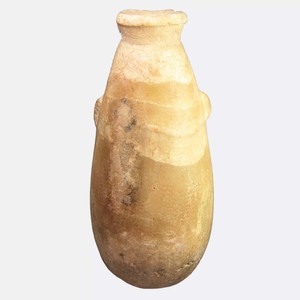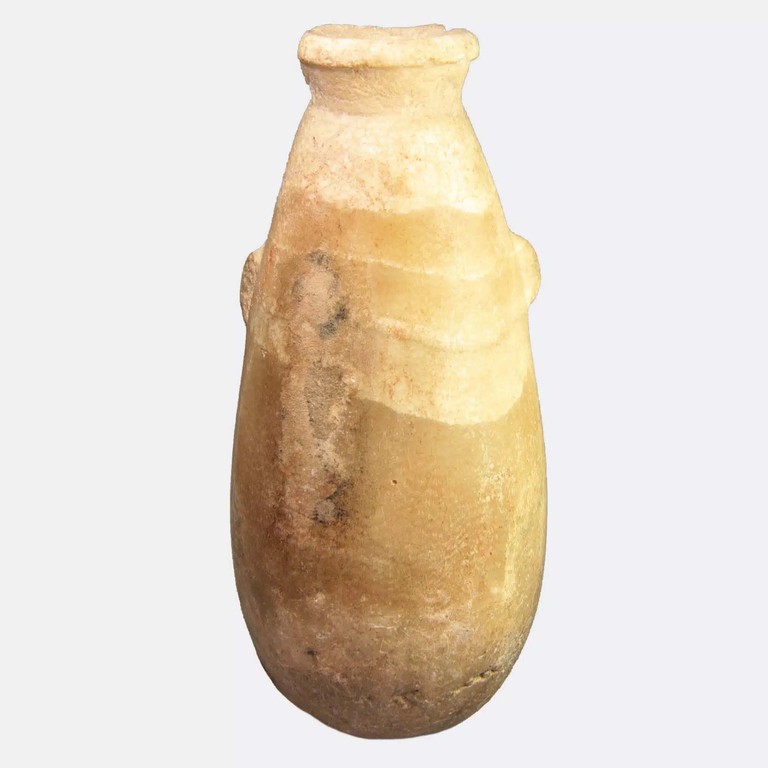Cypriot Alabaster alabastron,: Archaic II– Classical I (600-400BC)
Perfume bottle, carved from alabaster, which would have had a stopper. Although the general type was introduced from Egypt and found in Late Bronze Age tombs at Enkomi, they have mostly been found from the late 6th century tombs (especially in Salamis), and continued through the Classical period with only small variations, which makes them hard to date. Some were probably imported from the Levant, Egypt and Greece, but many were made in Cyprus from local calcite alabaster. Otherexamples have the wide, mushroom lip typical of much Phoenician pottery.
Opaque, banded, honey coloured calcite alabaster. Elongated sack-shaped body tapering from rounded bottom to short out-turned neck and slightly protruding rim. Two rounded vertical lugs above mid-line. Drilled-out interior.
Stable crack on body plus chipping
Cf. Lubsen-Admiraal 2004, p.39; Metropolitan Museum Acc.Nos: 74.51.5099; 74.51.5100.
Size: 13.8 x 6.0cm
(Ex. collection: Mary Gladys Bolton (1885-1975), UK; acquired during her Grand Tour in the 1920’s. Thence by family descent since 1975 to a private collection in Gloucestershire, UK. Ms Bolton, and companion Marjory Andrews, journeyed extensively visiting the Mediterranean, Levant, China etc)
(Aquired Helios Gallery UK, 28 November 2022)
(DJ 245 AN 225)

